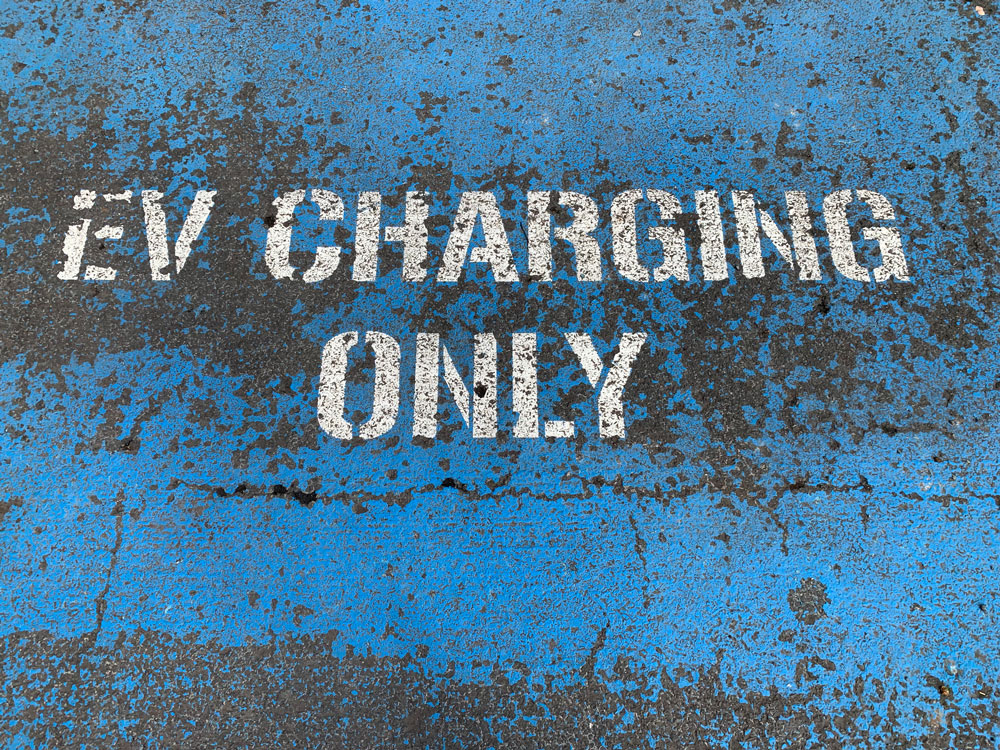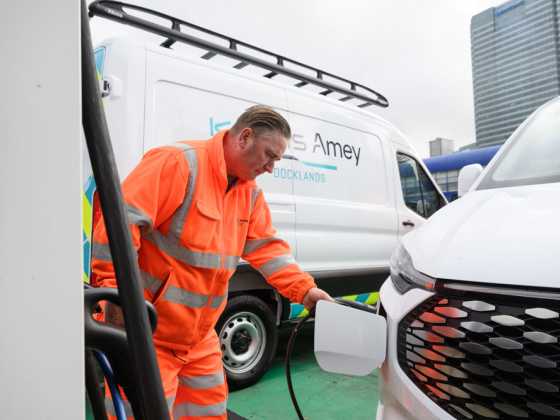Financial help for charging infrastructure

Local authorities have a crucial role to play in enabling the transition to electric vehicles, by facilitating the rollout of chargepoints in their local areas, as well as transitioning their own fleet operations to electric. We summarise the government grants available to support this
The government’s electric vehicle strategy says that local authorities are “fundamental to successful chargepoint rollout, particularly for the deployment of widespread on-street charging”. It says they are ideally placed to identify the local charging needs of residents, fleets and visitors.
But many local authorities face hurdles when developing of EV plans. Local authorities in the south east of England were surveyed by Cornwall Insight and the Greater South East Net Zero Hub and 53 per cent said they do not have an electric vehicle charging infrastructure strategy in place, and of these, 17 per cent said they were yet to consider developing a strategy. Cost was identified as the primary barrier to developing a plan, while grid capacity and staffing were also cited as obstacles.
What’s more, just half had spoken to local residents about their EV strategy, and only 18 per cent had spoken to local businesses.
Katie Hickford, senior analyst at Cornwall Insight commented: “Local Authorites face the challenge of managing limited staff and financial resources, so must ensure the correct type of charge points are put in the locations that need it most. By engaging with businesses and residents, LAs can ensure that infrastructure meets the needs of the community, promotes the adoption of EVs, and contributes to a cleaner, more sustainable future.”
Adding to these challenges, local authorities must also transition their own fleet operations to zero-emission to meet future targets. With diverse fleets, from vans to refuse trucks and road sweepers, this is not a straight-forward challenge.
To support local authorities with the EV infrastructure roll-out in their local areas, as well as that for their own charging needs, there are various grants available. This includes a grant that aims to increase the capability of local authorities to plan and deliver EV infrastructure, through training and staffing.
The LEVI Fund
The Local Electric Vehicle Infrastructure (LEVI) Fund supports local authorities in England to roll out on-street local charging infrastructure, especially to help those that cannot charge their electric vehicle at home.
The fund includes capital funding to contribute to the costs of delivering chargepoints, as well as capability funding for local authorities to employ and train new staff specifically to plan and deliver chargepoint infrastructure.
The LEVI Fund is intended to fund primarily lower-powered local chargepoints. It will cover all capital costs associated with the installation of EV chargepoints, including chargepoint hardware, electrical connection costs, civil engineering costs and other installation costs.
Rapid charging is eligible for funding as part of projects, but it’s expected that most of the funding supports delivery of lower powered chargepoints.
The deadline for local authorities to register their Expression of Interest (EOI) for funding was in May. The Energy Saving Trust, the organisation that manages the scheme, is now assessing the EOIs to determine which tranche the local authority will progress in. Its support body will notify local authorities of their tranche, and then help local authorities with the next stage of their application, which is the development of a business case.
On-Street Residential Chargepoints
The On-Street Residential Chargepoint Scheme, which local authorities are invited to apply for, is designed to increase the availability of on-street chargepoints in residential streets where off-street parking is not available.
The funding is for up to 60 per cent of eligible capital costs, with total funding not exceeding £7,500 per chargepoint unless electrical connection costs are exceptionally high. In these cases, funding up to £13,000 per chargepoint may be provided.
The remaining costs could come from chargepoint operators, if they are willing to invest capital into local authority projects which allow investment to be recovered over time, or from local authority budgets, if, for example, the local authority is going to own and operate the infrastructure.
While the scheme is primarily for on-street charging, it can be used in car parks if they are owned by the local authority. If a car park project is submitted for funding, the local authority must explain or show why they are not being installed in residential streets. The car parks must be accessible on a 24/7 basis and local residents must be able to access the car parks for free overnight between 6pm and 8am. Each chargepoint must have its own dedicated EV bay enforced by a TRO and there must have a minimum ‘maximum stay’ time of four hours during the day to ensure residents have access to a substantial charge.
The scheme was recently changed to allow chargepoints to be installed on land not owned by a local authority, such as where community-owned land like village hall car parks. But this will be considered on a discretionary basis where it can be demonstrated that a lack of suitable local authority land poses a barrier to the installation of residential chargepoints.
All chargepoints installed through this scheme must have a minimum payment method, such as contactless.
The capital items that are eligible for claim are limited to the purchase cost of the chargepoint up to 22 kW, the purchase cost of electrical components related to the chargepoint, including distribution network operator (DNO) connection costs, and the cost of civil engineering works related to the installation. It can also cover the labour and hardware costs of the installation, and the capital costs of a parking bay paint and signage.
The workplace charging grant
Local authorities are expected to transition their own fleet operations to zero-emissions. Central government too has a target to have a full electric fleet by 2027.
To help with charging requirements, the Workplace Charging Scheme (WCS) is open to public sector organisations, as well as businesses and charities. The grant covers up to 75 per cent of the total costs of the purchase and installation of EV chargepoints and is capped at a maximum of £350 per sockets and 40 sockets across all sites per applicant. If you apply for less than 40 sockets, you can submit additional applications in the future until you reach that limit.
These places must have dedicated off-street parking, and either own the property or have consent from the landlord for chargepoints to be installed at all the sites listed in the application.
Each site must have a minimum power supply of 3kW to each individual socket that is not diminished by their simultaneous use, and have have no more than one socket installed for each accessible parking space.
Before applying for the Workplace Charging Grant, applicants are encouraged to discuss their needs with one or more authorised WCS installers and undergo a site survey to ensure the electrical capacity of the site can support the number of sockets being applied for.
Applicants must also consider the needs of disabled drivers and drivers with reduced mobility, as well as how the chargepoint will be maintained and any associated costs. Other points to assess include how the cost of electricity usage will be covered, if or how users would be charged, and whether to make the chargepoint open for public use and, if so, whether to make the location of the chargepoint public.
If the applicant does not own or manage the land where they wish to install chargepoints, they must also secure the necessary permissions ahead of making an application.
Increasing EV knowledge & capability
The LEVI Capability fund aims to increase the capacity and capability of local authorities to plan and deliver EV infrastructure and to help them publish an EV infrastructure strategy for their area.
Funding has been made available to county councils, unitary authorities and combined authorities, where applicable. Combined authorities will be allocated and issued funding on behalf of authorities in their region. There is a bespoke approach for London that involves Transport for London and London councils.
Local authorities should identify how the resource funding can best support them to increase their capability to deliver EV infrastructure. This could mean one or multiple full-time members of staff across different roles and teams. The proposed approach should be explained in the proposal.
Releasing public land
The Mayor of London has pledged to unlock land owned by TfL and other members of the Greater London Authority, including the London Fire Brigade, the London Ambulance Service, and the Metropolitan Police, as well partners in the NHS, to increase the density of the rapid charging network across the city.
This sees Transport for London (TfL) take public land to the private market to help bring the infrastructure needed to keep electric vehicle accessible to drivers in London.
To kick this off, TfL has awarded Zest a contract to provide and operate 39 rapid or ultra-rapid electric vehicle charging bays on public land. The charging points will be installed in 24 locations in south and southwest London by the end of 2024 including outer London boroughs such as Sutton and Bromley.
The charging infrastructure will be placed in parking bays near key routes used for essential road journeys typically made by high mileage, commercial users – including taxis and freight.






